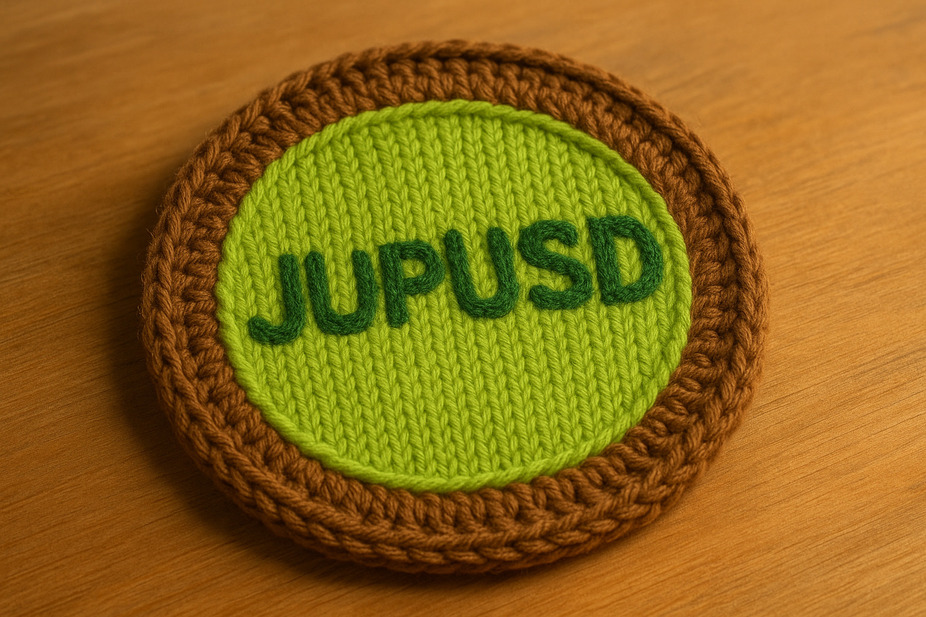Hunting for early crypto gems: here’s how to find them first!

Want to snag those promising crypto projects before everyone else catches on in 2025? It’s all about doing your homework and looking beyond the hype. We’ve got five key things to check – the teams building it, how people are actually using it, how easy it is to buy/sell, the token’s design, and its security – so you don’t get caught in a “dump” when the early investors cash out.
Quick takeaways for your gem hunt:
- The builders: Are they actually building stuff? Look for busy code repositories, consistent updates, and outside recognition.
- Real usage: Forget the buzz; focus on actual fees being paid and revenue the project keeps. Does it have real users?
- Liquidity: Can you easily get in and out without sending the price wild? Depth across different exchanges matters more than just “volume.”
- Token design: Avoid projects where a tiny bit of the token is available now, but a huge amount is about to be unlocked, potentially crashing the price.
- Security: Audits are a start, but dig deeper. Who did them, when, and who can change the code?
Getting in early means spotting genuine progress before the masses: teams churning out useful code, people actually using the product, and token designs that won’t fall apart when the first big unlock happens or an exploit hits.
There’s a lot out there. Developers are pushing code to thousands of places, and new blockchains and protocols seem to pop up every other day. This guide will give you five simple checks to help you tell the difference between a genuinely hot prospect and just a mirage.
1) The builders: Who’s behind the wheel and what are they doing?
Always start with the people and their code. The clearest early sign is a team that’s publicly and consistently delivering useful updates. Think multiple active developers, recent code merges, tests and documentation that keep up with new features, and a bit of recognition from grants or hackathons.
Great places to snoop around include developer reports like Electric Capital to see bigger trends, a project’s GitHub for how often they commit code and deal with issues, hackathon showcases like ETHGlobal, and public grant records such as Optimism RetroPGF or Arbitrum.
We’re looking for steady, consistent progress, not just sudden “big drops.” And builders who win funding or prizes from programs with clear rules and public results usually stand out. Visible work plus outside validation helps filter out the empty promises.
Did you know? Over 18,000 developers contribute to open-source Web3 and blockchain projects every month. Ethereum alone has over 5,000 active developers monthly!
2) Usage: Are people actually doing valuable stuff?
Once you’re confident in the team, the next step is crucial: are people actually paying to use this thing? The two most important metrics here are fees (what users spend to access the protocol) and revenue (what the protocol keeps after paying out to participants like validators or liquidity providers).
Stick to standard definitions from platforms like Token Terminal. You don’t want to confuse fees paid to liquidity providers or miners with the actual money the protocol retains. Strong usage looks like rising fees per user and growing profits, alongside a consistent number of daily or weekly active wallets – not just temporary spikes from incentive programs.
Always cross-check your metrics with independent sources like Messari or Token Terminal. Don’t fall for flashy, but ultimately meaningless, stats or thin trading volumes. When you see “Total Value Locked” (TVL), ask yourself: are those deposits genuine and active, or are people just dumping money in to chase rewards? Prioritize projects where paid usage, user retention, and the protocol’s cut all go up together. Be wary of anything that loses all its steam once the incentives dry up.
3) Liquidity: Can you get in and out without crashing the market?
Don’t just blindly trust trading volume numbers; they can be faked. What you really need to look at is “order-book depth” – basically, how much money is actually sitting there, ready to buy or sell – and “consistent spreads” (how stable that depth stays, especially when things get volatile).
Research from places like Kaiko shows that depth is a much better indicator than raw volume, which can easily be manipulated with “wash trading.”
Look for increasing depth across multiple reliable exchanges, and for prices that stay pretty close together even during busy times. It’s a huge red flag if most of the available liquidity is jammed into just one pool or exchange, or if the reported volumes seem way higher than the actual depth – both signal shallow liquidity, meaning you’ll likely get a worse price than you expect if you try to make a big trade.
4) Token design & unlocks: don’t ignore how the supply works!
A lot of promising projects end up not working out, not because the product is bad, but because the token was set up poorly right from the beginning.
A classic danger is a tiny amount of tokens circulating now, but with the overall valuation (FDV) implying years of growth. When the “vesting cliffs” hit and huge batches of new tokens are unlocked, that sudden surge in supply can easily overwhelm demand and send prices plummeting.
Always, always, always check the unlock schedule first. How much is out there right now? How big are those upcoming unlock “cliffs”? And will those future releases completely swamp the average daily trading volume?
History shows just how damaging a huge supply overhang can be, especially when insiders hold a massive chunk. Good projects will publish clear, gradual unlock schedules with dedicated budgets for the community and for providing liquidity – not vague “ecosystem” pools that can be secretly reallocated without anyone knowing.
5) Security and upgrade path: an audit isn’t the finish line!
This is where a lot of early investors lose their shirts. An “audit badge” is only meaningful if you know who did the audit, what specifically they checked, when it was done, and if all the issues they found were actually fixed. Dig into the scope and severity of any findings. Then, look at the project’s governance: Can the code be upgraded? And who holds that power?
Things like proxies, pause functions, and admin keys are common, but if one person has all the control, the entire protocol could be changed overnight. Even Ethereum’s own guidelines, and companies like Trail of Bits, emphasize that audits can lower risk, but they can never eliminate it completely.
The best signs are multiple recent security reviews, upgrades that are controlled by “timelocks” (meaning changes don’t happen instantly) and “multisigs” (requiring multiple approvals), and transparent reporting of past bugs and how they were fixed. Anything less leaves you exposed to accidental errors or outright exploits.
A quick note on airdrops and points: ride the wave, don’t become the exit liquidity!
Points and airdrops can be good for spotting early momentum, but they don’t guarantee a project’s long-term success. Think of them more like an early user survey: they show where builders and communities are focusing, but the real test comes after the token actually launches and those early incentives have to stand up to genuine usage.
We’ve seen this pattern recently. EigenLayer’s Season 1 “stakedrop” had clear rules and a reasonable initial token distribution; it was transparent, but the activity still needed to continue after people claimed their tokens. Blast cleverly shifted from non-transferable points to liquid Blast incentives, pushing users towards real on-chain activity and mobile onboarding. Ethena’s campaign created a huge burst of short-term growth – great for getting noticed, but it still needs to prove its stickiness once the rewards run out.
For any campaign, always read the official documents to understand eligibility, how much of the token supply is involved, and the timing. Then, in the month after people claim their tokens, keep an eye on fees, how many users stick around, and how deep the liquidity is. Does the activity hold up?
Did you know? Historically, many open-source projects get “abandoned” if the core developers leave. However, in 41% of those cases, new core developers stepped in and brought the project back to life!
Trust the process, not just a hunch
Think of finding “early” gems as a process, not a lucky guess. Start by verifying the builders and their code. Then, confirm there’s real usage by looking at clear fee and revenue data – don’t confuse incentives with people actually loving the product. Finally, check the liquidity through real order book depth to make sure you can trade without messing up the market.
When all those signals line up – and the token unlocks, upgrade controls, and admin powers look solid – you’ve earned the right to keep watching or to take a carefully considered position.
Discipline is key here. Risks are still sky-high, and one bad incident can wipe out even strong fundamentals overnight.
Build yourself a simple “gem-scan” checklist, write down your assumptions, size your positions carefully (keeping smart contract and counterparty risks in mind), and be ready to walk away often. In the long run, having a solid process will pay off. Fear of Missing Out (FOMO) never does.












